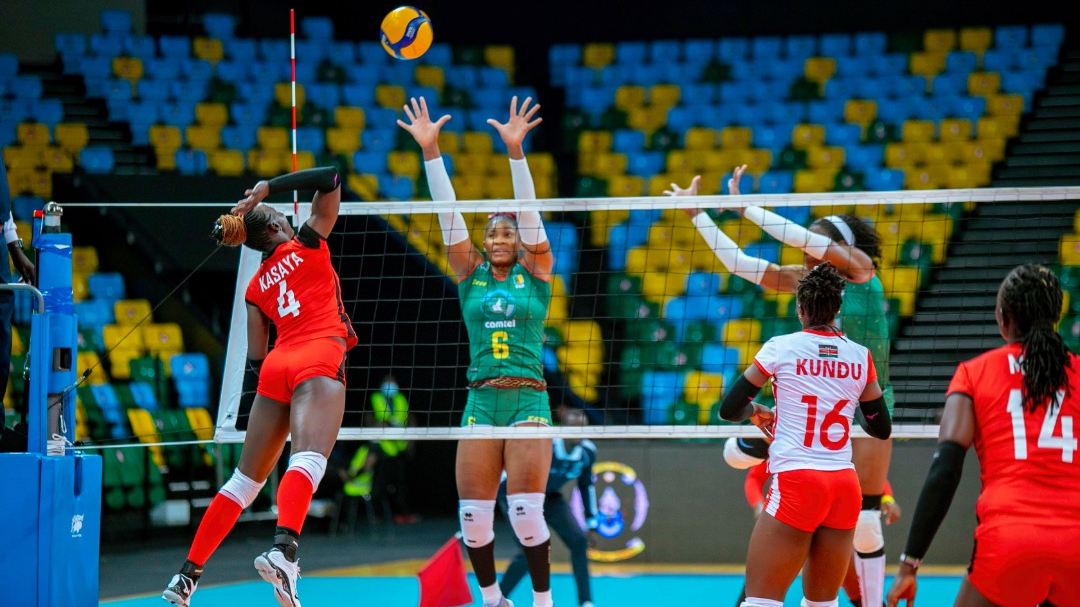Source: Africa Publicity
In the heart of Dar es Salaam, Tanzania, a young woman named Amina stood at the edge of a volleyball court. The warm breeze carried with it the distant sounds of the Indian Ocean, and the laughter of children echoed around her. Amina, a local historian and avid volleyball player, was preparing for a community event where she would share the origins of volleyball with the eager crowd gathered before her.
Amina’s fascination with the sport had grown over the years, and she had dedicated much of her time to researching its history. As she began to speak, her voice was clear and confident, captivating the audience with every word.
“Volleyball,” Amina started, “is a game that has traveled across continents, evolved through generations, and brought people together in ways that its creator could have never imagined.”
She paused, letting her words sink in before continuing.
“It all began in the small town of Holyoke, Massachusetts, in the United States. The year was 1895, and a man named William G. Morgan, a physical education director at the YMCA, was looking for a new sport to engage his students. Morgan wanted something that was less intense than basketball, which had been invented just four years earlier, but still provided a good workout. He envisioned a game that combined elements of basketball, baseball, tennis, and handball. And so, he created ‘Mintonette,’ the original name for what we now know as volleyball.”
Amina’s eyes sparkled as she shared the details of how Morgan developed the game. “Morgan used a tennis net, raised it to about six feet and six inches above the ground, and introduced a basketball bladder as the ball. The objective was simple: to keep the ball in motion over the net, without letting it touch the ground. It was meant to be a game of skill, rather than brute strength, which made it appealing to people of all ages and abilities.”
She glanced around, noticing how her audience was drawn into the story, some nodding along as they followed the tale of the sport’s early days.
“As the game gained popularity, particularly among the YMCA members, it began to spread to other parts of the United States. In 1896, the first official game of volleyball was played at Springfield College, where Dr. Luther Gulick, a colleague of Morgan, introduced the sport to his students. The game was an instant hit, and soon, ‘Mintonette’ was rebranded as ‘volleyball,’ a name that better captured the essence of the game.”
Amina paused for a moment, allowing the gentle hum of the city to fill the air before she continued.
“From its humble beginnings, volleyball began to make its way around the world. In the early 20th century, the game was introduced to Canada, followed by countries in Europe and Asia. By 1916, the Philippines had adopted the sport, and it was there that the ‘set and spike’ technique was developed, revolutionizing the way the game was played. This new style of play made volleyball more dynamic and competitive, and it quickly caught on in other regions.”
As Amina spoke, she wove in stories of how the sport had taken root in various African countries. She told of how, in the 1930s, volleyball was introduced to Nigeria by British colonial officials and how it became a popular pastime among students and young people. She shared how, in Kenya, the sport was embraced by schools and communities, leading to the formation of local leagues and tournaments that helped to foster a deep love for the game.
“In Ghana,” Amina continued, “volleyball was brought to the attention of the military, who saw it as an excellent way to keep soldiers fit and engaged. The game quickly spread to civilian populations, and by the 1950s, it had become a staple in schools across the country. The sport’s ability to bring people together, regardless of age, gender, or social status, made it particularly appealing in post-colonial Africa, where communities were seeking ways to unify and build new identities.”
Amina could see that her audience was captivated by the journey volleyball had taken across the globe. She decided to bring the story closer to home, focusing on how the sport had evolved in different parts of Africa.
“In Egypt,” she said, “volleyball gained popularity in the 1940s, particularly among university students. The sport quickly spread to other North African countries, including Algeria and Tunisia, where it became a major part of the sporting culture. By the 1960s, both men’s and women’s volleyball teams were competing in regional and international tournaments, showcasing the talent and dedication of African athletes on the world stage.”
Amina then turned her attention to West Africa. “In countries like Senegal and Côte d’Ivoire, volleyball became a symbol of national pride. The sport was incorporated into school curricula, and local clubs were established to nurture young talent. By the 1970s, these efforts had paid off, with African teams beginning to make their mark in international competitions.”
She smiled as she recalled the stories of players who had risen to prominence, not just in Africa but on the global stage. “One of the most inspiring stories comes from Cameroon,” she said. “The national volleyball team, known as the ‘Indomitable Lions,’ has become a force to be reckoned with in African and international volleyball. Their success is a testament to the hard work and dedication of players, coaches, and supporters who have helped to elevate the sport to new heights.”
Amina could sense that her audience was eager to learn more, so she decided to explore how volleyball had continued to evolve in the modern era.
“In recent years,” she began, “volleyball has seen tremendous growth across Africa. Countries like Rwanda, Uganda, and Tanzania have invested in developing the sport at the grassroots level, recognizing its potential to inspire young people and build stronger communities. National federations have been established to oversee the development of the sport, and efforts have been made to improve coaching, facilities, and opportunities for players to compete both locally and internationally.”
She went on to describe the rise of beach volleyball, which had gained popularity in coastal regions across the continent. “Beach volleyball, with its fast-paced action and stunning settings, has captured the imagination of many, particularly in countries like South Africa and Mozambique. The sport’s inclusion in the Olympic Games has further boosted its profile, inspiring a new generation of African athletes to take up the challenge.”
Amina concluded her presentation with a reflection on the enduring appeal of volleyball. “What started as a simple game in a small town in the United States has grown into a global phenomenon, touching the lives of millions of people across the world. Here in Africa, volleyball has become more than just a sport; it’s a way of life, a source of pride, and a powerful tool for bringing people together.”
As she finished speaking, the crowd erupted in applause, their appreciation for Amina’s storytelling evident in their enthusiastic response. She smiled, grateful for the opportunity to share the rich history of a sport that had become so deeply intertwined with the lives of people across Africa.
Amina knew that the story of volleyball was far from over. As the game continued to grow and evolve, new chapters would be written, and new legends would emerge. And she was determined to be there, not just as a historian but as a passionate advocate for a sport that had the power to unite, inspire, and transform.








